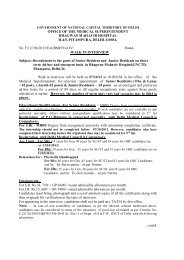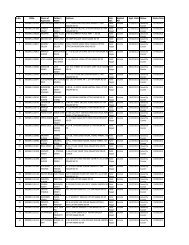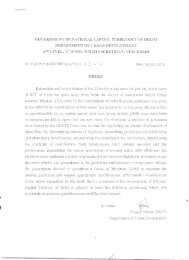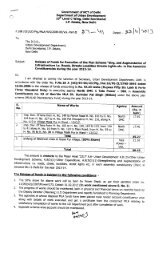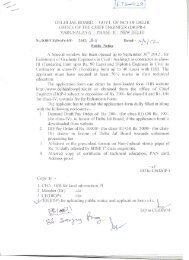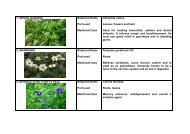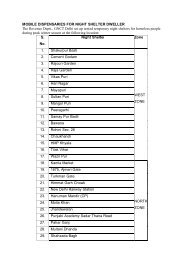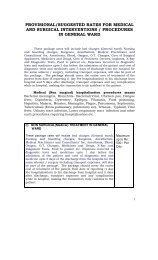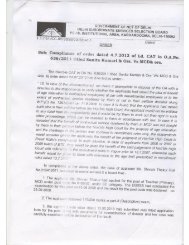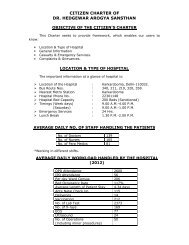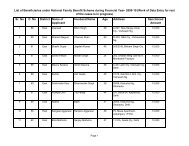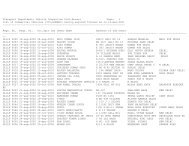You also want an ePaper? Increase the reach of your titles
YUMPU automatically turns print PDFs into web optimized ePapers that Google loves.
with one eye closed from the side AC of the prism. Fix another two pins R and S on the<br />
paper such that the tips of these pins and images of the incident ray pins (P and Q) all lie<br />
in the same straight line.<br />
7. Remove the pins and prism. Encircle the pin pricks with a sharp pencil.<br />
8. Join R and S and extend it backward to point Y on AC. Draw a normal N as shown in the<br />
2<br />
diagram.<br />
9. Join XY, which shows the path of light ray inside the prism.<br />
10. Now PQXYRS shows the path of the rays of light passing through the prism.<br />
11. Repeat steps 2 to 10 for other angles of the incidence.<br />
OBSERVATIONS:<br />
From the diagram it is clear that as the ray moves from air ( optically rarer medium ) to glass<br />
(optically denser medium ) it bend towards the normal. And when it moves from glass( optically<br />
denser medium ) to air( optically rarer medium ) it bends away from the normal.<br />
RESULT :<br />
PQXYRS represents the path of light ray through the prism as shown in the diagram.<br />
PRECAUTIONS :<br />
1. The same prism should be used for all observations.<br />
2. Prism should be placed properly inside the drawn marking.<br />
3. The angle of incidence should be taken between 30 degrees to 60 degrees.<br />
4. The separation between the pins should not be less than 6 cm.<br />
5. The pins should be fixed vertically and firmly.<br />
6. The points of incidence should be taken approximately in the middle portion of the<br />
prism.<br />
101



